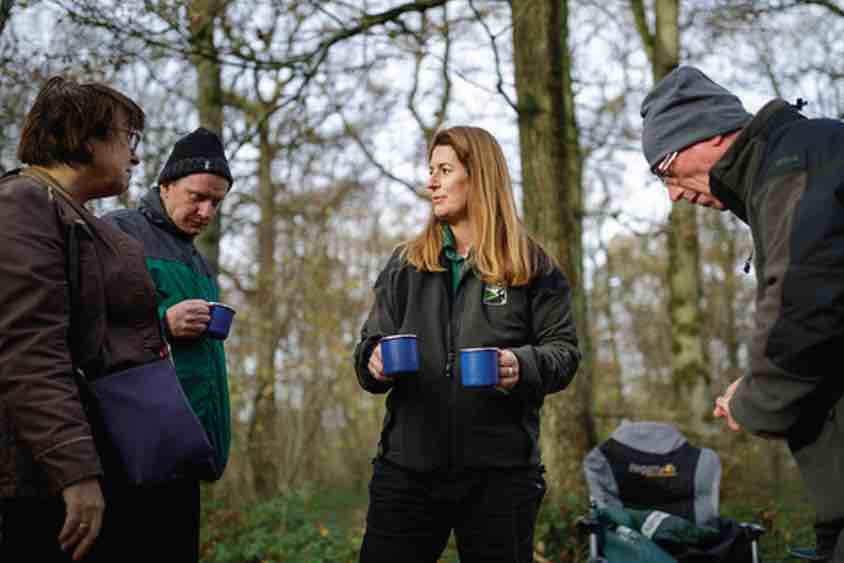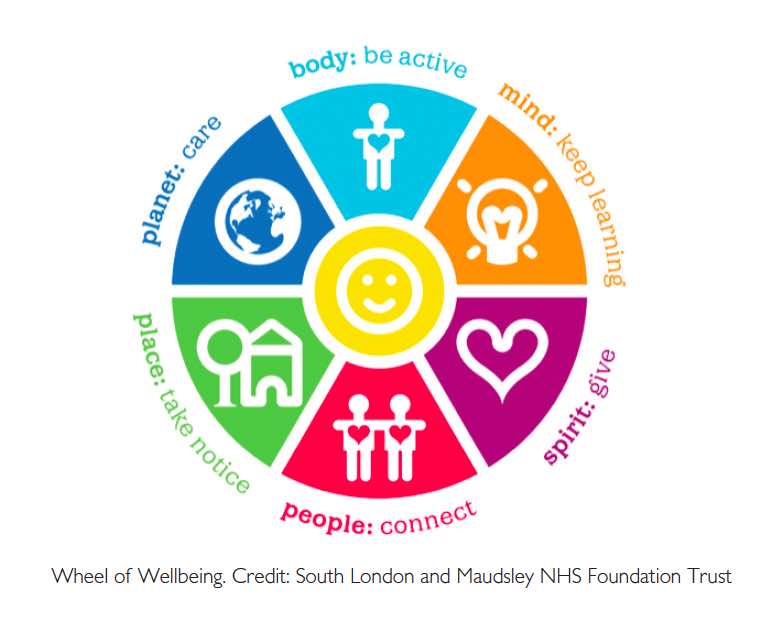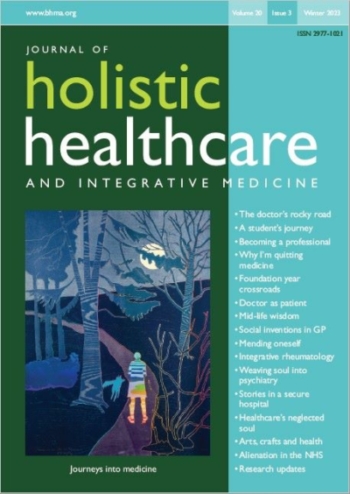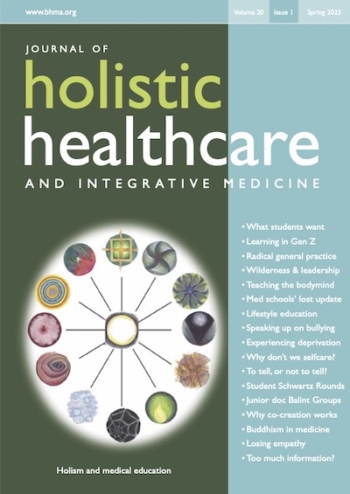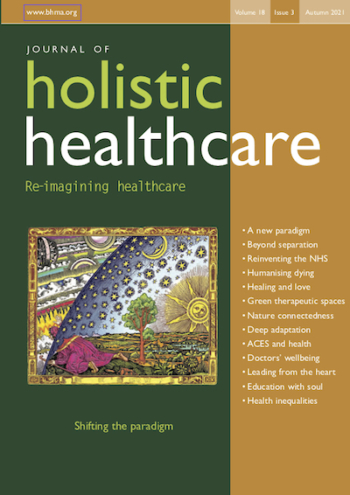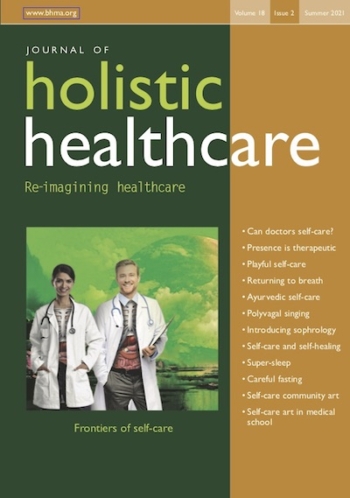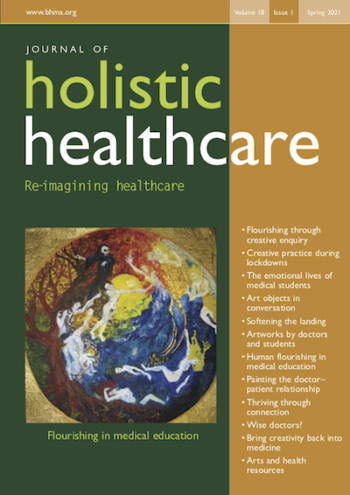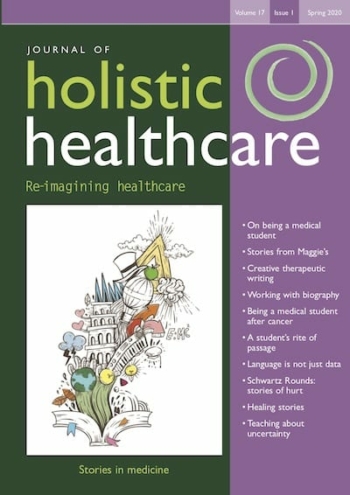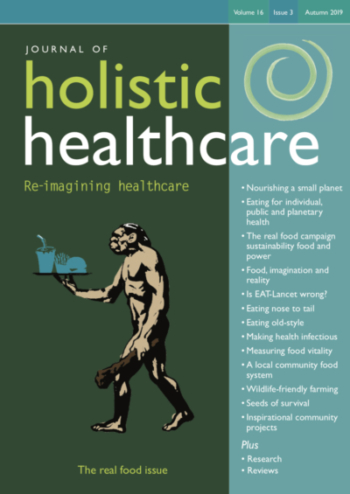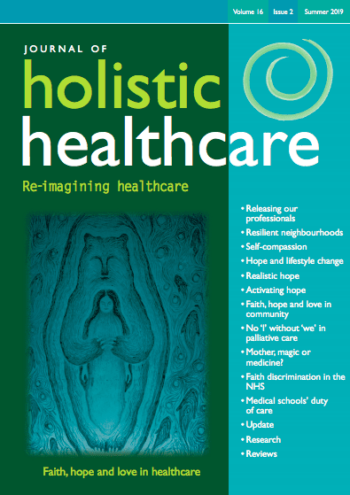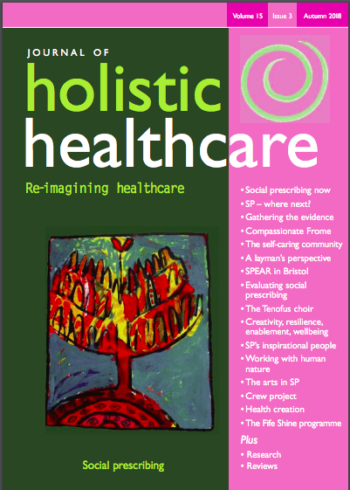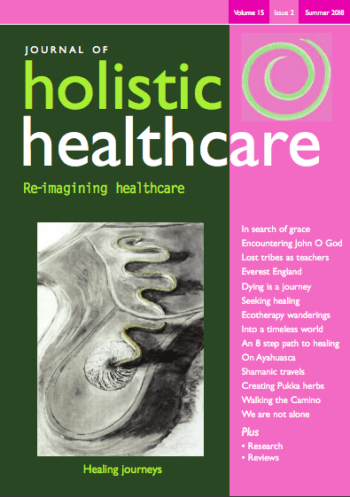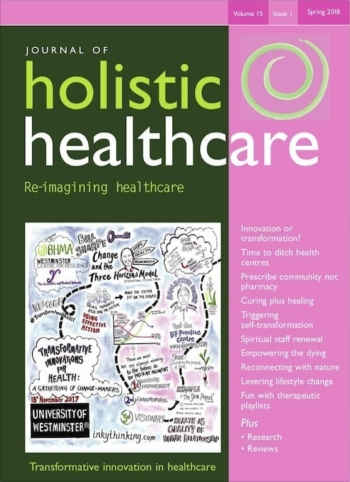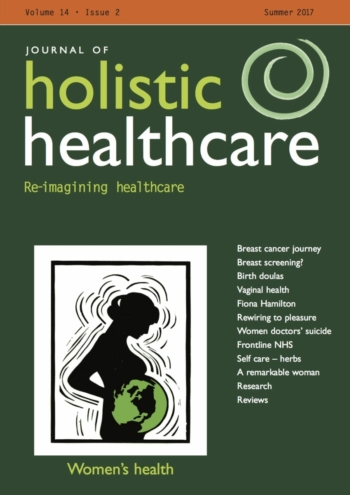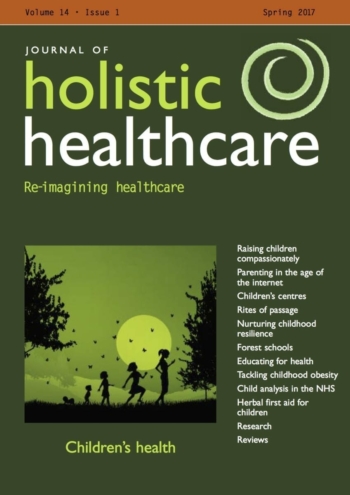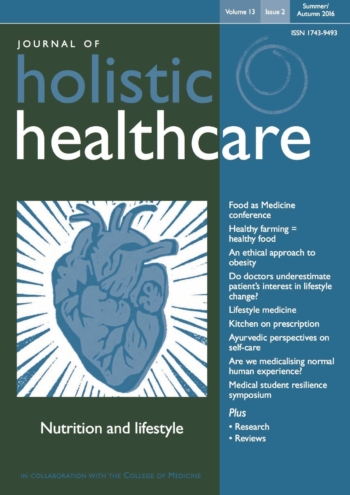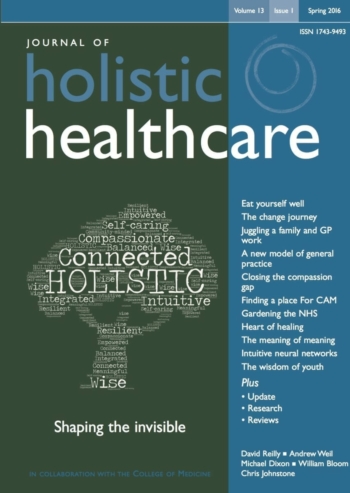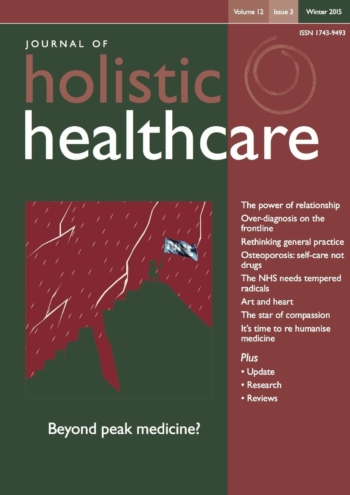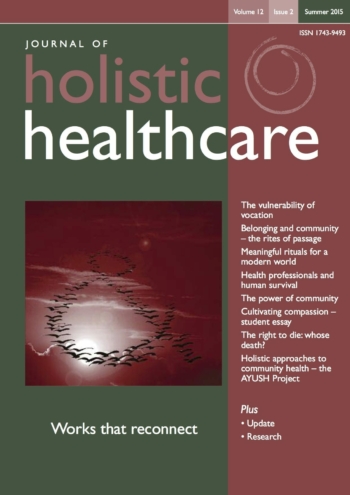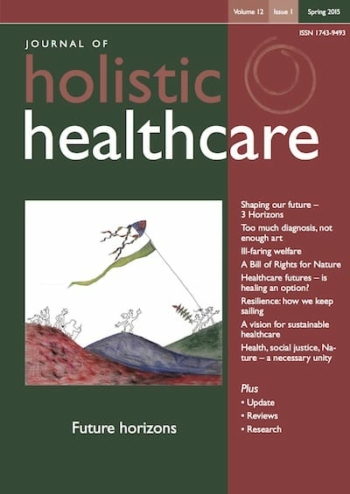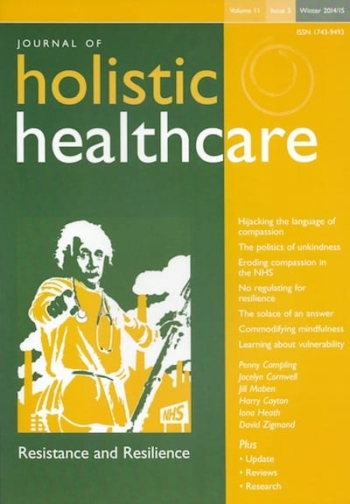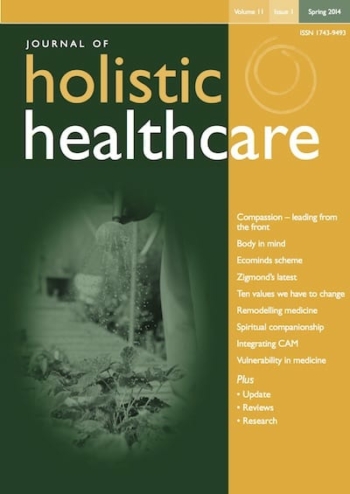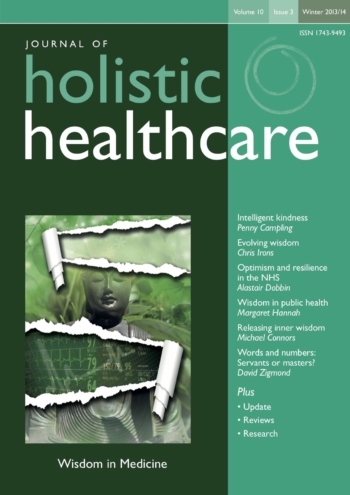By Melanie Vincent Wellbeing Programme Support Officer, Wiltshire Wildlife Trust.
Wiltshire Wildlife Trust has a long history of delivering a county-wide wellbeing programme that offers nature-based activities for people who are struggling with mental health issues. The activities range from conservation work to wildlife walks and nature-based crafts. The programme launched in Wiltshire in 2008, with funding from Wiltshire Council for people living in the county, and in Swindon in 2017, with funding from The Big Lottery for people who live in Swindon or who access services there.
Over the years the programme has helped hundreds of participants improve their mental wellbeing and, on exiting the programme, helped them move on to other activities, whether it be further volunteering, education, training or employment.
It may seem surprising that a wildlife trust should offer such a service, but one of the core aims of the trust is to inspire and support people to live more sustainably; working to improve the health and wellbeing of people can clearly help achieve this important social goal. The Trust’s people- and community-focused work is one of the largest sections of the organisation covering a range of projects
- Building Bridges – supporting people into work and education by helping them to develop new skills.
- Milestones – connecting vulnerable and marginalised young people to their natural environment, offering them opportunities to widen their knowledge of the natural world
- Repair Academy – a social enterprise dedicated to reducing waste and refurbishing goods, while at the same time providing skills and training for young people and affordable goods to low-income households.
- Wild Connections – enabling people of all ages from different backgrounds to enjoy and connect with nature.
- Youth Wellbeing – providing forest schools, and targeted work with young people facing challenges in their lives.
The Wellbeing Programme – and our other people-focused projects – has the view that by engaging people in meaningful and purposeful activities outdoors, not only is their wellbeing improved, but also their connection to nature itself, and the desire to look after it. This is not just for the individual personally, but also on a larger scale, for the benefit of others, their local environment and the planet as a whole.
Connecting with nature and the ‘six ways to wellbeing’
Our work on the Wellbeing Programme originally took inspiration from Edward O. Wilson’s biophilia hypothesis, published in 1984, in which Wilson suggests that humans have an innate tendency to seek connections with nature (Wilson, 1984).
In recent years we have applied the Wheel of Wellbeing to guide our range of nature-based activities. The Wheel of Wellbeing, which features six ways to well – being, is a variant on the New Economics Foundation’s original Five Ways to Wellbeing (New Economics Foundation, 2008). This was devised as a mental health equivalent to the advice that people should eat five portions of fruit and vegetables a day.
The Wheel of Wellbeing was developed by the mental health promotion team at South London and Maudsley NHS Foundation Trust to promote positive mental health and wellbeing across London (www.wheelofwellbeing.org). It features six areas in our lives – body, mind, spirit, people, place and planet – where improvements are possible and can help people live more fulfilling lives emotionally, mentally and physically.
As an environmental and wildlife organisation, it made sense for us to use the ‘six ways’, rather than the ‘five ways’, as the additional sixth embraces taking care of the planet. This framework and the activities offered, give participants opportunities to learn about and appreciate wildlife and the natural environment, and how living more sustainably can help them, others and the planet. The activities offered on our Wellbeing Programme feed into the six different areas:
Body – be active: all the activities on the programme, whether a conservation task, a nature walk or a nature-based craft, keep participants physically active.
Mind – keep learning: participants learn new skills, such as coppicing, and knowledge about why coppicing matters. They may also learn a new craft like whittling or charcoal-making, or learn about wildlife on a nature walk.
Spirit – give: on the programme participants give their time to nature and to each other, carrying out work as a team that will ultimately benefit the local wildlife and local communities.
People – connect: participants come together in a safe and supportive environment where they can build relationships and develop friendships.
Place – take notice: all activities on the programme change with the seasons, encouraging participants to take notice of their surroundings and the changes that are taking place throughout the year.
Planet – care: all activities on the programme involve taking care of the local environment and wildlife, and learning about why the work carried out in each session is important and valuable. There is a growing wealth of information and published research to show that actively engaging with nature is beneficial to a person’s wellbeing. Miles Richardson is well known in this field, and in 2017 he, Ryan Lumber and David Sheffield jointly published a research paper that identified five pathways for helping ‘develop a meaningful and emotional relationship with nature’ (Lumber et al, 2017; Richardson, 2017).
Activities give participants the opportunity to learn about and gain an appreciation of wildlife and the natural environment, and how living more sustainably can help them, others and the planet.
The pathways, like the ‘six ways’, are another useful framework to guide and inspire nature-based activities. It’s interesting to note how the activities we offer, and have been offering for years, feed into these pathways. Contact: during walks, mindfulness sessions, or downtime, participants are encouraged to use their senses and listen to the sounds of nature, breathe in the fragrance of a wildflower meadow in summer or a damp woodland in autumn, feel the bark of trees, and look out for and observe different species.
Emotion: revisiting sites throughout the year gives participants an opportunity to see how habitats change with the seasons, and what effect the work they have carried out – like coppicing or hedgelaying – has had on the local habitats.
Beauty: beauty in nature can be found in all forms, from the sweeping vastness of chalk downland or wildflower meadows, to the minutest of details in a dying leaf, with its incendiary range of colours and crisp curling edges or the fascinating behaviour of courting grebes…participants are encouraged to take in and appreciate these moments.
Meaning: participants gain an understanding of the value of our natural world, what it means to them, how it makes them feel, how wonderfully varied and rich it is; it gives them an incentive to protect it, to look after it, for their own benefit and for the benefit of others and the environment.
Compassion: through the work of the programme, participants are more invested in looking after their local environment. They gain an understanding of the issues that can affect local habitats and are keen to look after them, whether by taking part in conservation tasks, building a bug hotel or picking up litter.
How the programme works
 The Wellbeing Programme helps people who are struggling with mental health issues. Over the years we have engaged with participants who are living with a range of conditions: depression, anxiety, panic, stress and post- traumatic stress disorder (PTSD), and more complex conditions like paranoid schizophrenia, multiple personality disorder and psychosis. Participants can self-refer, though most are engaged with mental health services and the referrals have come via their care co-ordinators, or recovery and/or support workers. Other referrals come via GPs, housing associations, drug and alcohol services, and the probation service. Before joining the programme, participants meet with a member of staff for an informal assessment meeting. Staff on the programme are not mental health professionals but come from diverse backgrounds that include conservation work, youth work, social services and management. All staff members have received training on mental health issues, including mental health awareness, mental health first aid and applied suicide intervention skills training. The assessment meeting gives both parties the opportunity to find out more about each other and go through risk assessments and care plans. Following the meeting, a taster day is offered so the participant can experience what a typical day on the programme is like, and then decide if they wish to continue. Once on the programme, participants are assigned to a group that meets on a weekly basis. They are picked up and dropped off at a central meeting point. Bus and train fares to the meeting point can be reimbursed to prevent financial constraints from being a barrier to participation. Likewise, purchasing essential items – a decent raincoat or boots – may also be reimbursed. Activities usually take place on trust nature reserves, or on other local green spaces. All the work carried out is on essential tasks that feeds into the management plan for each nature reserve or site. This is an important aspect of the Wellbeing Programme as it gives the groups an added sense of genuine purpose and achievement. Not all activities are physically demanding – some are more leisurely, like a nature walk or a whittling session. But whatever participants are doing, they gain an appreciation of the natural world and how they can help look after it.
The Wellbeing Programme helps people who are struggling with mental health issues. Over the years we have engaged with participants who are living with a range of conditions: depression, anxiety, panic, stress and post- traumatic stress disorder (PTSD), and more complex conditions like paranoid schizophrenia, multiple personality disorder and psychosis. Participants can self-refer, though most are engaged with mental health services and the referrals have come via their care co-ordinators, or recovery and/or support workers. Other referrals come via GPs, housing associations, drug and alcohol services, and the probation service. Before joining the programme, participants meet with a member of staff for an informal assessment meeting. Staff on the programme are not mental health professionals but come from diverse backgrounds that include conservation work, youth work, social services and management. All staff members have received training on mental health issues, including mental health awareness, mental health first aid and applied suicide intervention skills training. The assessment meeting gives both parties the opportunity to find out more about each other and go through risk assessments and care plans. Following the meeting, a taster day is offered so the participant can experience what a typical day on the programme is like, and then decide if they wish to continue. Once on the programme, participants are assigned to a group that meets on a weekly basis. They are picked up and dropped off at a central meeting point. Bus and train fares to the meeting point can be reimbursed to prevent financial constraints from being a barrier to participation. Likewise, purchasing essential items – a decent raincoat or boots – may also be reimbursed. Activities usually take place on trust nature reserves, or on other local green spaces. All the work carried out is on essential tasks that feeds into the management plan for each nature reserve or site. This is an important aspect of the Wellbeing Programme as it gives the groups an added sense of genuine purpose and achievement. Not all activities are physically demanding – some are more leisurely, like a nature walk or a whittling session. But whatever participants are doing, they gain an appreciation of the natural world and how they can help look after it.
The groups are very relaxed and informal: participants know they can do as much or as little as they feel able to on the day. They are not there to talk about, or share details of their issues, unless they wish to, but rather to come together within a supportive environment and engage in purposeful and meaningful activities whilst enjoying the outdoors. Simply being aware that others in the group are also going through difficult times can give participants and their group a unique sense of belonging. When participants come to the end of their involvement on the programme, they are helped to move on to other activities and opportunities with local organisations, including the trust. Sometimes programme staff will help participants with paperwork such as providing references, advice on CV writing or filling in
Simply being aware that others in the group are also going through difficult times gives each participant and group a unique sense of belonging
employment opportunities. In Swindon, the team has an allotment plot and some gardening equipment for a follow-on group for participants. On this site, previous participants can meet up and continue with the friendships they have formed on the programme and also continue to engage in meaningful and productive outdoor work where they can see firsthand the fruit of their labour. Throughout the year, this group has worked together to build and decorate a shed, assemble and install benches and bird feeders, and tend to their own individual plots. Plans are in place to provide a similar follow-on group in Wiltshire.
Monitoring wellbeing and programme’s impact
Participants’ wellbeing is measured and monitored using the Warwick Edinburgh Mental Well-being Scale (WEMWBS). This is a scale of 14 positively worded statements used to assess a population’s wellbeing. The scale is widely used to assess wellbeing interventions. A participant’s first WEMWBS score, taken during their assessment meeting, becomes their baseline score from which progress is measured. Participants are then asked to fill in a form every other week they are on the programme. This is optional, and although it is encouraged, participants are aware it’s not compulsory. Last year, of the participants who took part in both Wiltshire and Swindon programmes and who filled in the WEMWBS forms (n.129), 75% reported the same or an increased sense of wellbeing. WEMWBS is a useful tool to measure a participant’s progress, but it’s important to note that it’s not the only way to measure the success of individual participants or the programme as whole. In addition to the WEMWBS data, we also record what participants move on to when they leave the programme – for example, of those who left last year, 60% went on to education, training, employment or further volunteering. We also record what participants tell us about how the programme is helping them and its effect on their lives.
These comments and case studies can be more powerful and meaningful than WEMWBS scores which can be attributed to and/or affected by a number of other factors in a participant’s life. Future direction and sustainability The Swindon Wellbeing Programme has funding until 2020, and work is already underway to ensure the trust can continue to provide this service after the funding period comes to an end. In Wiltshire, the team has been trialling a condensed eight-week wellbeing programme and is currently looking for funding to continue delivering this service in 2019 and beyond.
What our participants say
‘I really benefit from being outside in the natural environment. Good people and supportive staff.’
‘Once again I say this group is a “priceless” part of my week helping me maintain positive mental health. Thank you!!’
‘Great help with my general wellbeing.’
‘Working together and sharing our thoughts and feelings.’
‘I really enjoyed seeing the progress of the work we were doing.’
‘…nice spending time with different group of people and connecting and working as a team. Feeling valued and opinions listened to.’
‘I felt nervous and unsure on the first day… but being on the programme is helping me. Now, I’m going out more – even if it’s just me. I find being in nature is beneficial, it helps.’
‘The best bit about the programme is getting back to being a child; being outdoors, getting back in contact with nature. Every day we’re doing something different. I have stopped taking medication for anxiety… I think joining the programme has been a contributing factor to reducing my medication. I would definitely recommend the programme.’
If you would like to find out more about the Wellbeing Programme, our work and funding situation, or find out more about our other people-focused projects, please get in touch. melaniev@wiltshirewildlife.org

